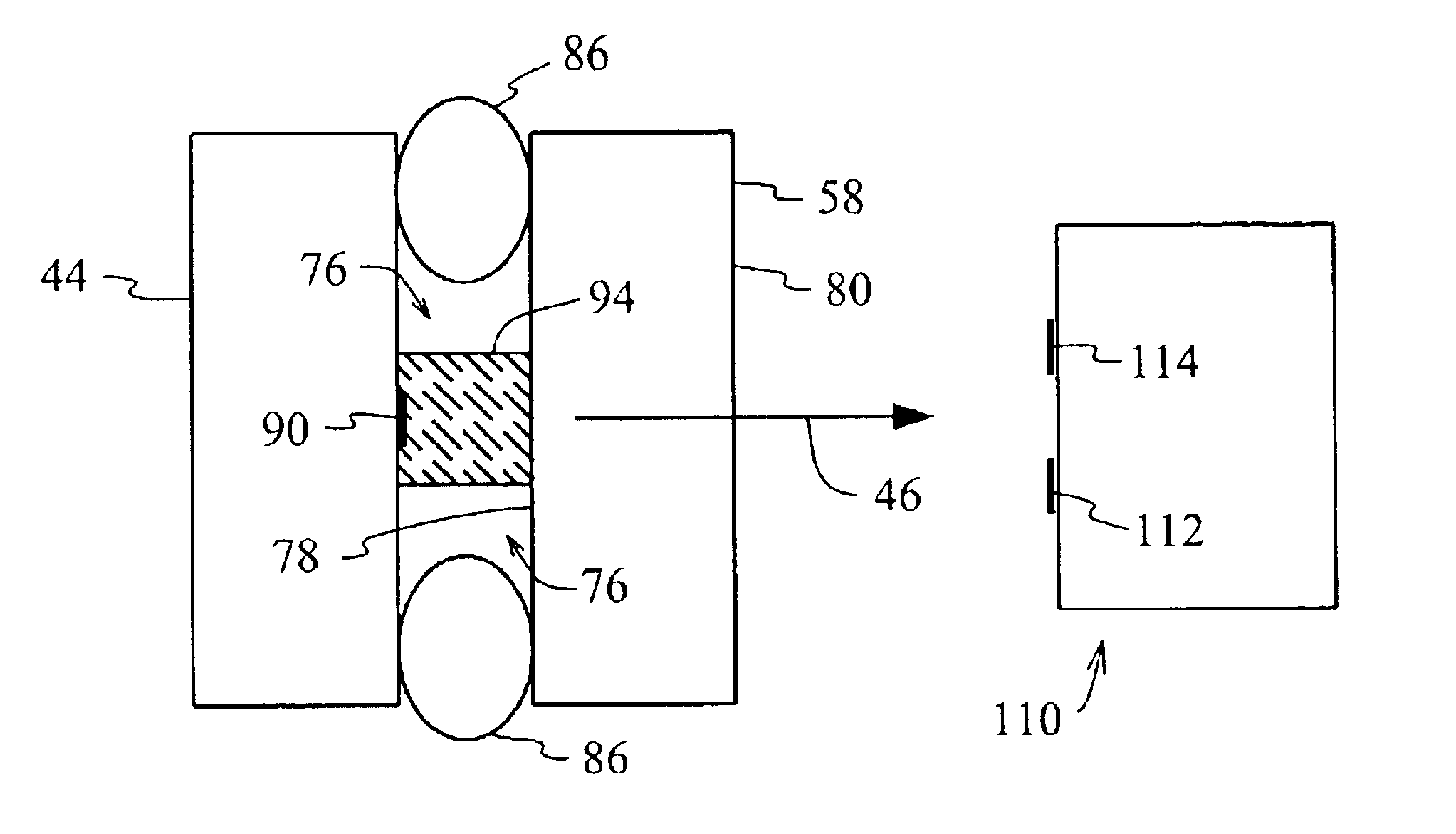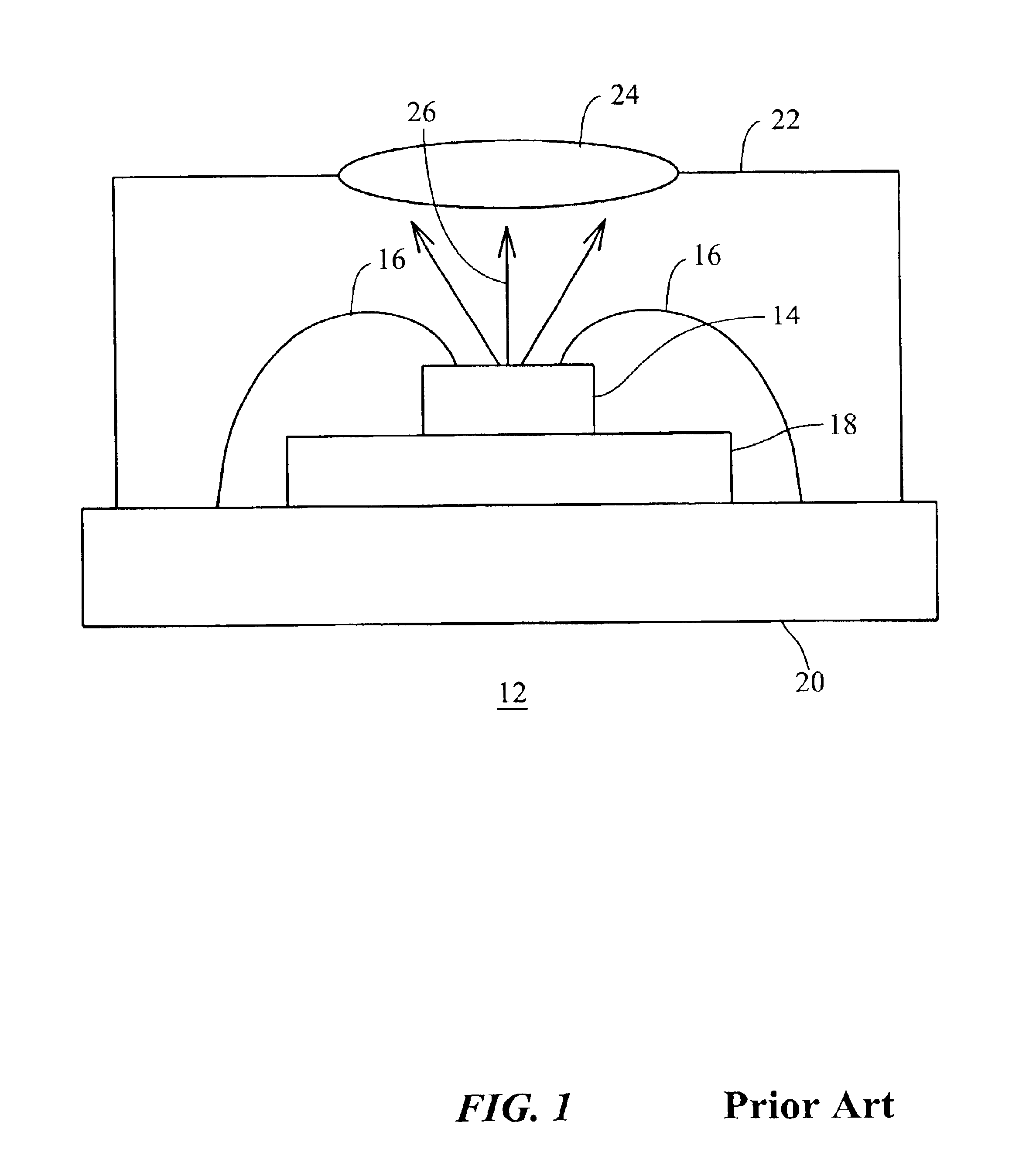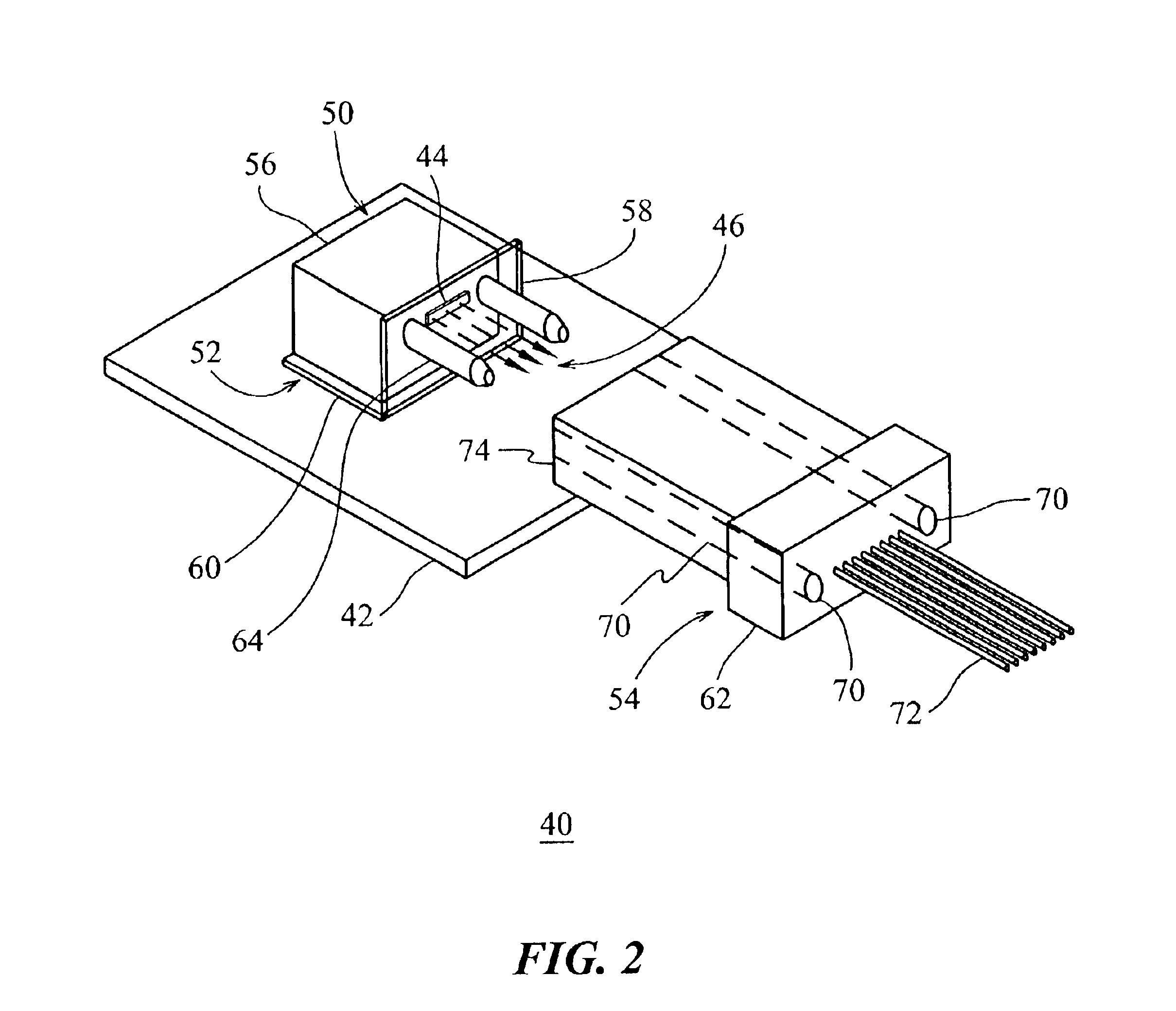Method of attenuating an optical signal
- Summary
- Abstract
- Description
- Claims
- Application Information
AI Technical Summary
Benefits of technology
Problems solved by technology
Method used
Image
Examples
Embodiment Construction
FIG. 2 shows an electro-optic communications assembly 40 in accordance with the invention and in a context of use. The assembly 40 may include a common substrate 42, or printed circuit board (PCB), an optically transparent substrate assembly 52 attached to the PCB 42, and an optical connector assembly 54 generally holding a plurality of optical fibers 72.
The PCB 42, may be any suitable material such as FR4, ceramic interconnect, or the like. The PCB 42 may have a plurality of electrical and optical devices for signal processing, as well as electrical traces and electrical pads (not shown in the figure).
The optically transparent substrate assembly 52 may comprise a glass or a glass-like structure having desirable optical and structural properties, and could be about 110 microns in thickness. The substrate assembly 52 generally includes first and second optically transparent substrates 58, 60 joined along a common edge and an optical array 44. The optical array 44 may be mechanically ...
PUM
 Login to View More
Login to View More Abstract
Description
Claims
Application Information
 Login to View More
Login to View More - R&D
- Intellectual Property
- Life Sciences
- Materials
- Tech Scout
- Unparalleled Data Quality
- Higher Quality Content
- 60% Fewer Hallucinations
Browse by: Latest US Patents, China's latest patents, Technical Efficacy Thesaurus, Application Domain, Technology Topic, Popular Technical Reports.
© 2025 PatSnap. All rights reserved.Legal|Privacy policy|Modern Slavery Act Transparency Statement|Sitemap|About US| Contact US: help@patsnap.com



